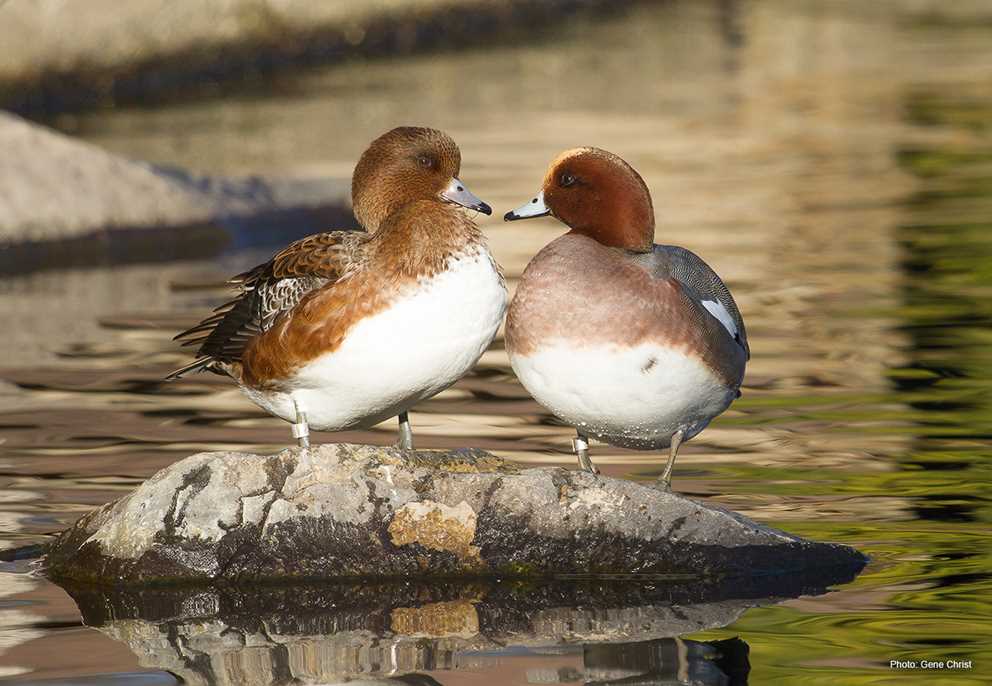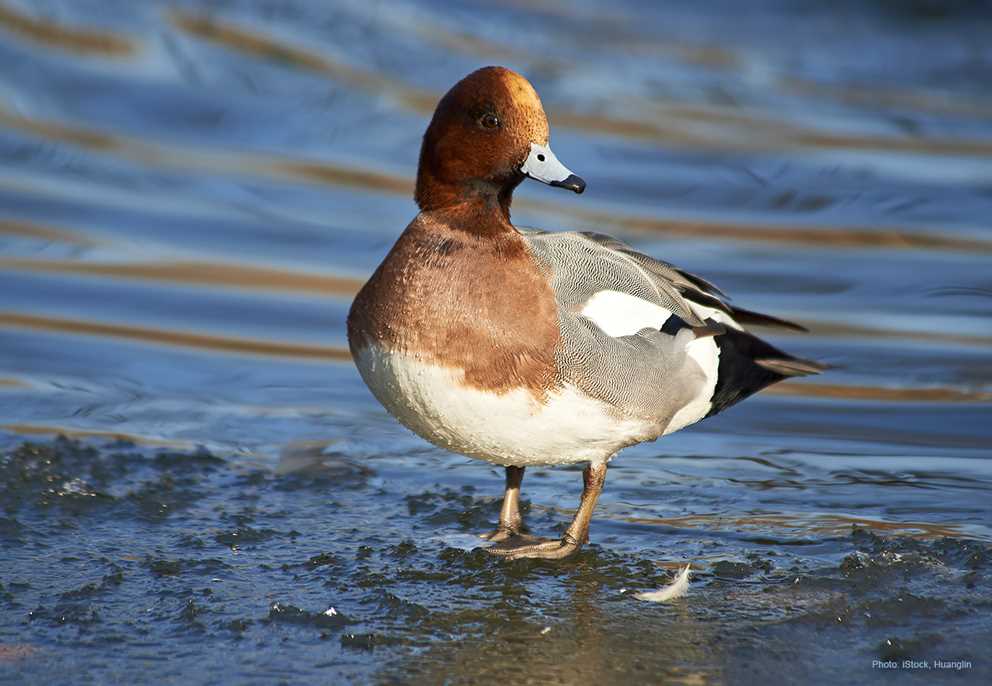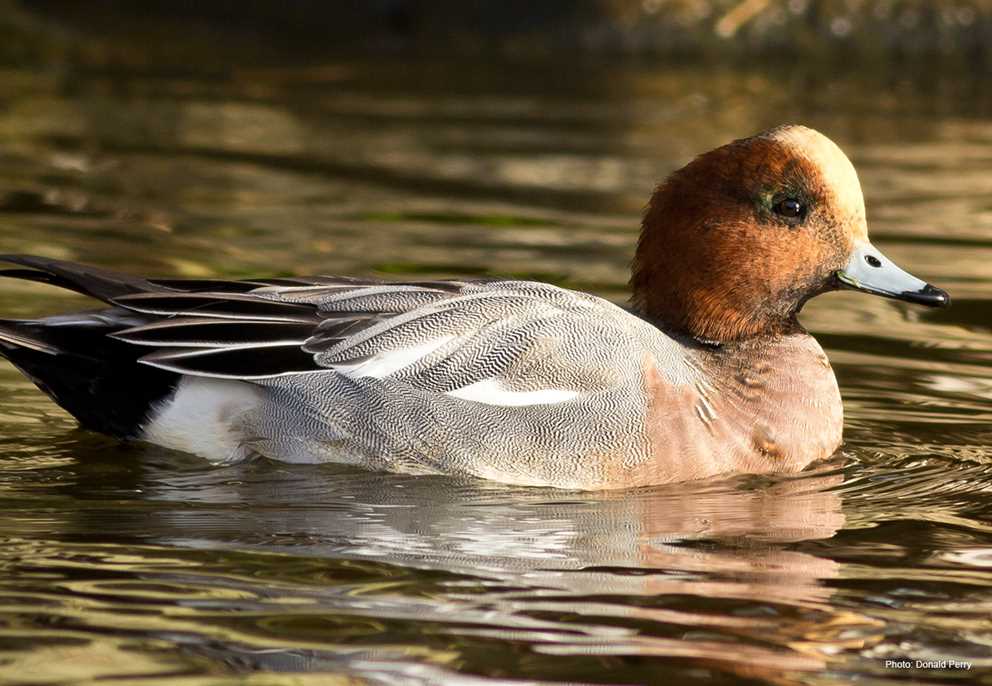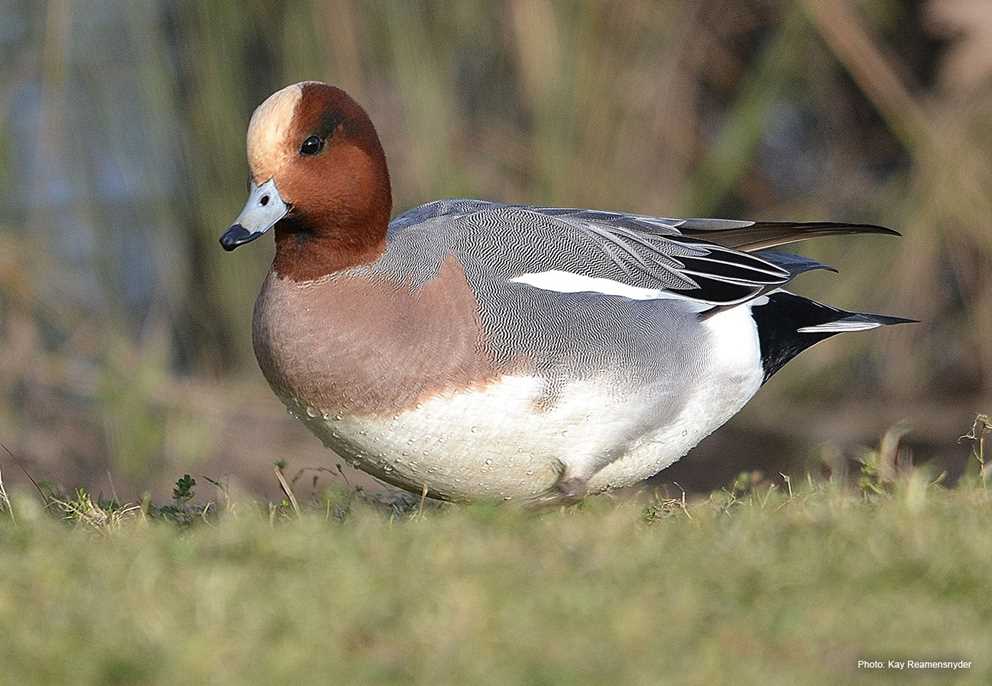Overview
The Eurasian Wigeon is a medium-sized dabbling duck that breeds in Europe and Asia, and overwinters in Europe, Africa, India, and Southeast Asia. However, relatively small numbers are found in winter in North America annually. Eurasian Wigeon nest in uplands in association with freshwater marshes, lakes, and lagoons with abundant aquatic vegetation upon which they feed. Males in alternate plumage have a distinctive cream to yellowish crown, a chestnut head and neck, gray vermiculated side and back, and a white breast and belly that contrasts with the black rump and vent. The bill is blue-gray with a black tip, and the legs and feet are gray. In flight, they have a green speculum and a notable white wing patch on the upper wing coverts. Females have a dark brownish-red head, the neck and chest are brown, flanks are rufous, and they show the white patch on the upper wing coverts, though it is less prominent than in males.
Description
Key Identification Features
- Eurasian Wigeon are medium-sized dabbling ducks.
- Males have a distinctive cream to yellowish crown, a chestnut head and neck, gray vermiculated side and back, and a white breast and belly that contrasts with the black rump and vent. The bill is blue-gray with a black tip, and the legs and feet are gray. In flight, the wings show a notable white patch and iridescent green speculum that separates them from all other species of waterfowl in North America, except the much more common American Wigeon.
Male/Female Average Length and Weight
- Weight: Males 1.3–2.2 lbs.; Females 1.1–1.8 lbs.
- Wingspan: No measurements, but like American Wigeon (Males 9.3–10.9 in.; Females 9.2–10.1 in).
Male Identification
- Alternate (Breeding) Plumage: Males in alternate plumage have a cream to yellow forehead and crown, chestnut head and neck, gray vermiculated sides and back, pinkish gray breast, white belly that contrasts with the black rump and vent. In flight, the wings show a notable white patch and iridescent green speculum. The bill is bluish with a black tip, and the feet and legs are gray.
- Basic Plumage: Overall brownish to brownish red, white belly, fairly dull plumage, sexes similar.
Female Identification
- Alternate (Breeding) Plumage: Females have dark brownish-red head, the neck and chest are brown, flanks are rufous, and they show the white patch on the upper wing coverts, though it is less prominent than in males.
In-flight Identification
- In flight, the wings show a notable white patch and iridescent green speculum that separates them from all other species of waterfowl in North America, except the much more common American Wigeon. The bill is bluish with a black tip, and the feet and legs are gray.
Vocalizations
- A high pitched piercing whistled “whee-OOO” with the loudest or accented part of the call being the last syllable. Quite different than the call of the American Wigeon.
Similar Species
- American Wigeon: Much more common in North America, American Wigeon have a white forehead and crown, a grayish head and neck with a notable green eye stripe, pinkish-brown breast, sides, and back, and a three-syllable whistle call that is quite different than that of the American Wigeon.
Habitat Preferences
- Breeding: Eurasian Wigeon are typically found on freshwater wetlands with abundant submerged vegetation that comprises most of their diet. Nesting birds use upland habitats with scattered trees to open woodlands in Northern Europe and Asia.
- Migration and Wintering: Winter habitat is variable and includes freshwater and emergent wetlands, and coastal marshes and estuaries where submerged aquatic vegetation is plentiful. Wintering Eurasian Wigeon are almost always found on wetlands with abundant submerged vegetation that is their primary food source. In North America, where they are rare to uncommon in winter, they are usually found in association with flocks of wintering American Wigeon or other dabbling ducks.
Foraging Habits and Diet
- Eurasian Wigeon are dabblers, and feed by grazing or tipping up to reach submerged aquatic plants.
- Breeding Season: Eurasian Wigeon eat a variety of species of aquatic vegetation, except females during the breeding season feed heavily on invertebrates for egg production.
Breeding Habits
- Monogamy: Eurasian Wigeon are seasonally monogamous.
- Nest Locations: The nest is usually in upland boreal areas with scattered trees or open forests with embedded freshwater wetlands.
- Clutch Size: Averages 8 to 9 eggs. The eggs are cream or buff, elliptical to sub-elliptical, and are 2.2 by 1.5 in. The incubation period is around 24 to 25 days.
Migration and Distribution
- Fall Migration: Eurasian Wigeon depart breeding areas in September or October depending on latitude. They arrive in winter areas from October through November. Rare to occasional in North America in winter.
- Spring Migration: Spring migration occurs from February through April with arrival on breeding areas in late April to May.
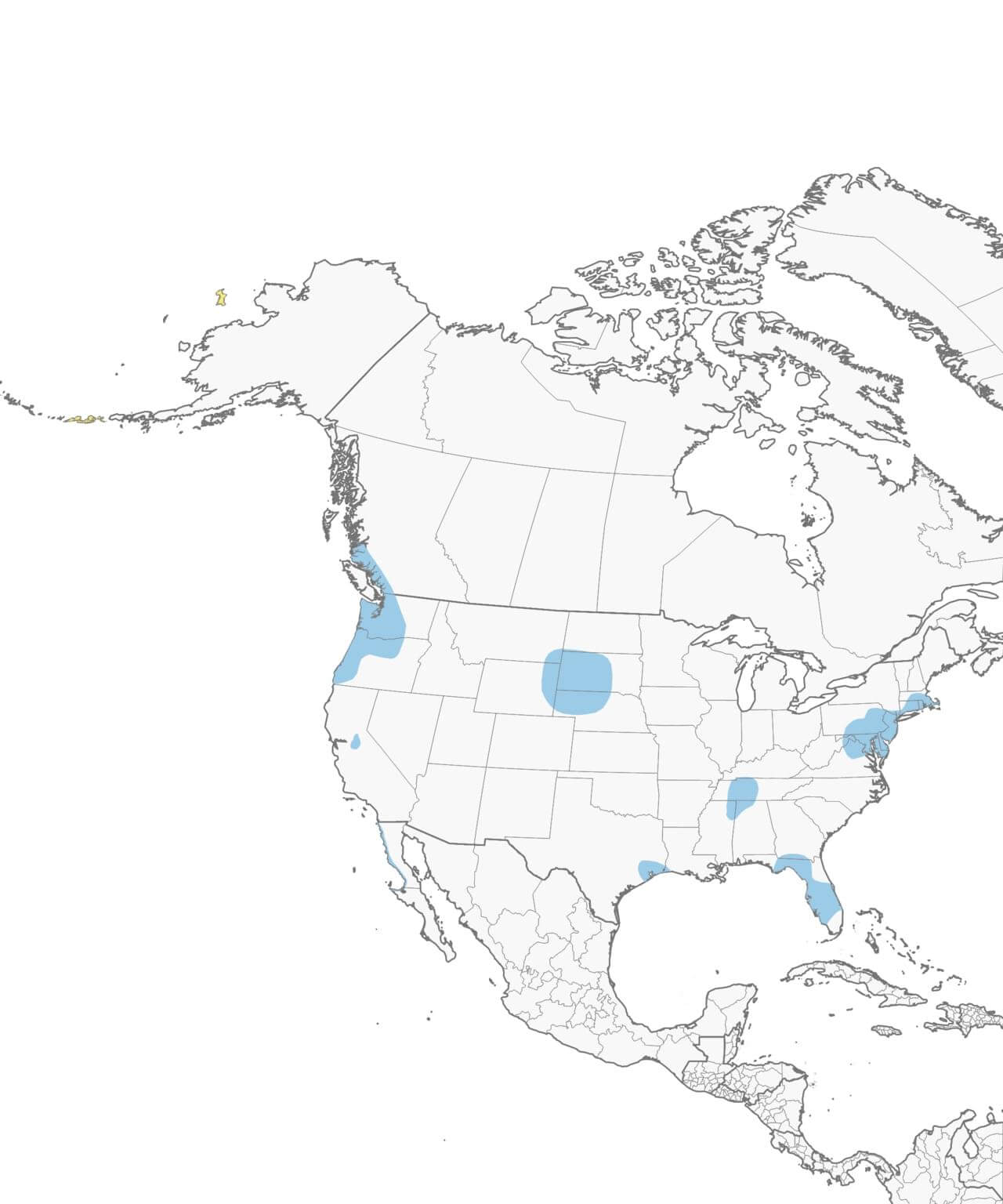
Conservation Status
- IUCN Status: Least Concern
- Population Status: No range-wide estimate but considered abundant with their population roughly estimated to be at least 2.5 million across Europe and Asia.
- Conservation Concerns: Wetland loss and degradation is the primary challenge to Eurasian Wigeon in both their breeding and wintering habitats.
- Conservation Focus: Conservation efforts focus on wetland restoration and preventing further losses of habitat.
Harvest Information
- Hunters in North America rarely to occasionally harvest Eurasian Wigeon. No estimated harvest in North America is available. More likely to be seen and harvested in the Pacific Flyway, but sightings and harvest have occurred across North America.
